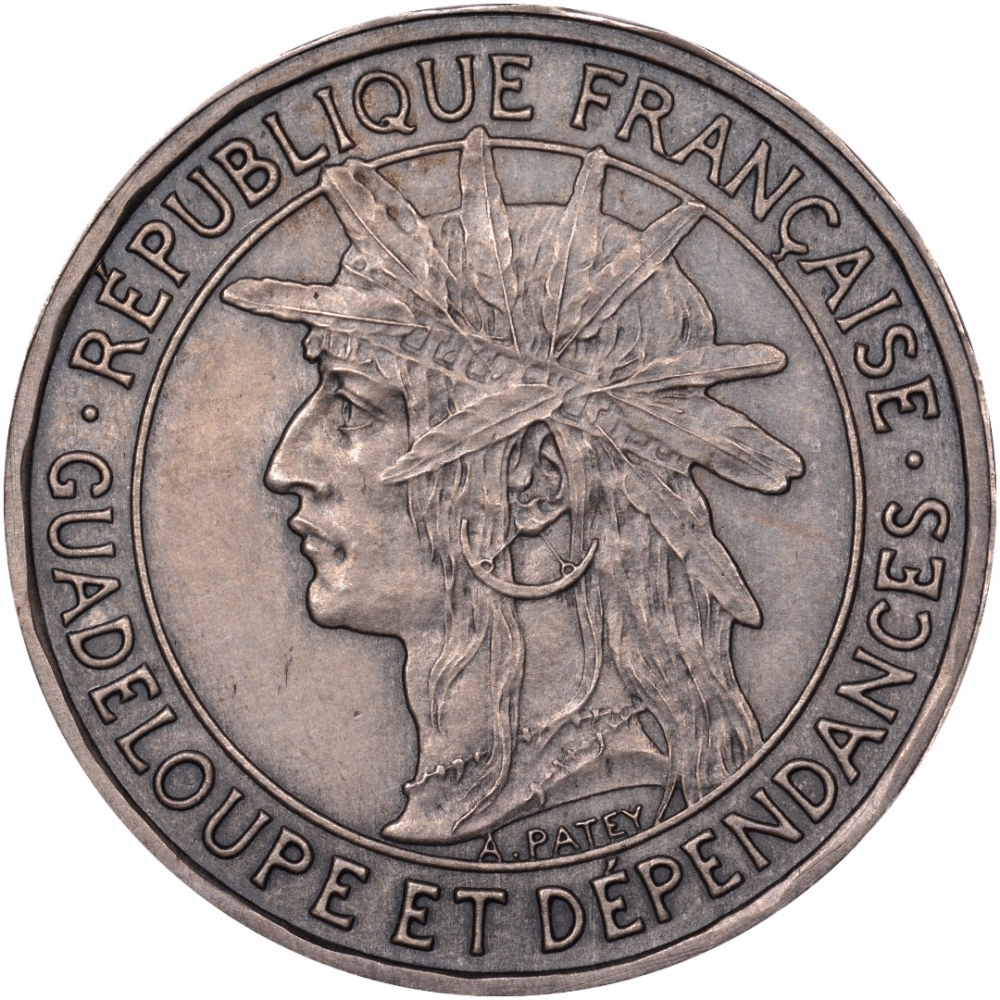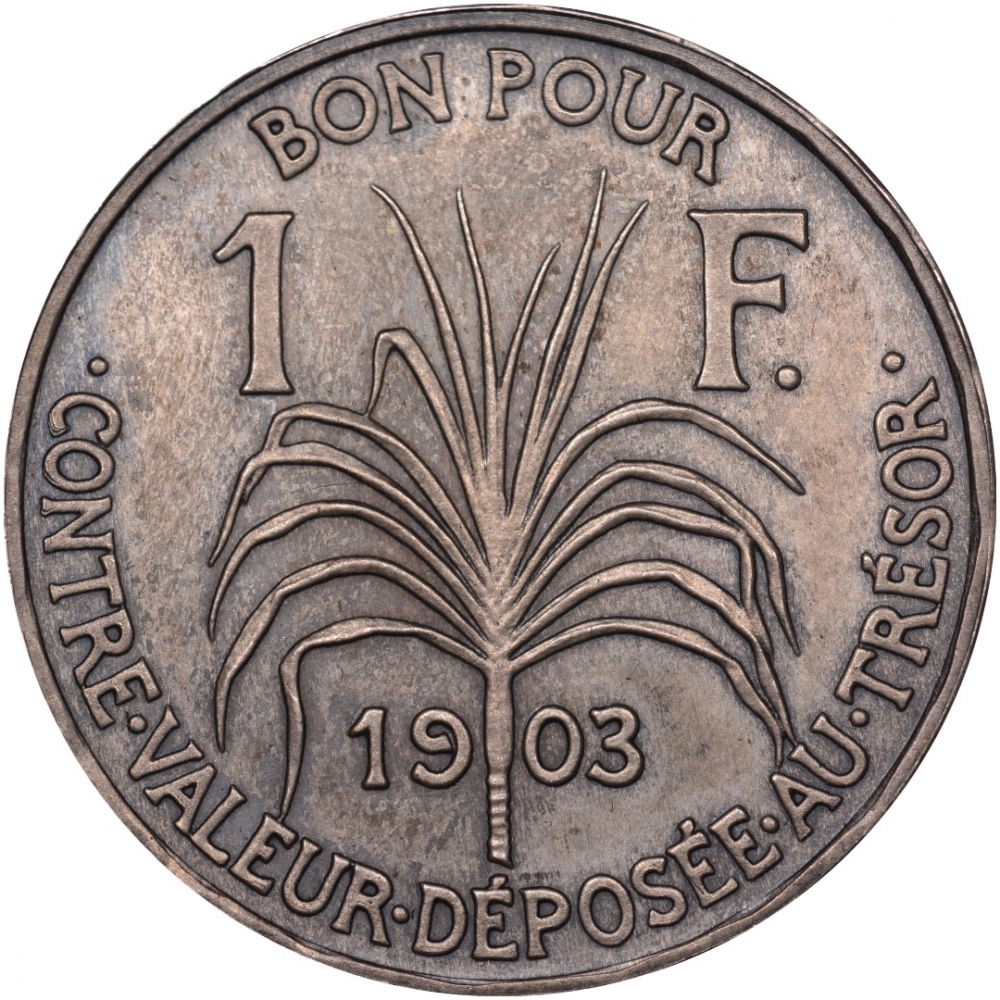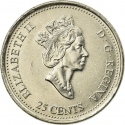You are about to finish your registration. Please check your mailbox (including spam folder). There should be a letter with a confirmation link. Check setting to make sure that your e-mail address is correct.
Send letter againDescription
Guadeloupe is an archipelago that consists of six inhabited islands, Basse-Terre, Grande-Terre, Marie-Galante, La Désirade, and the Îles des Saintes, as well as many uninhabited islands and outcroppings.
Christopher Columbus named the island Santa María de Guadalupe in 1493 after the Virgin Mary, venerated in the Spanish town of Guadalupe. Upon becoming a French colony, the Spanish name was retained though altered to French orthography and phonology. In 1946 the colony of Guadeloupe became an overseas region of France.
Guadeloupe used coins minted for all French New World colonies marked "Colonies Françaises", or countermarked coins until the first coins were minted for it in 1903.
Engraver: Henri-Auguste Patey
Obverse

|
Bust of an Arawak man with feathers on his headband, facing left, within circle and name of the designer A. Patey, surrounded by inscriptions in French "French Republic" above and "Guadeloupe and Dependencies" below. • RÉPUBLIQUE FRANÇAISE • |
|---|---|
Reverse

|
Sugar cane stalk divides date and denomination ("Good for 1 Franc"). The inscription in French "Against a Deposit in the Treasury" below. BON POUR |
| Edge |
1 Franc
KM# 46
Characteristics
| Material | Cupronickel |
| Weight | 5.6 g |
| Diameter | 25.2 mm |
| Thickness | 1.35 mm |
| Shape |
|
| Alignment | Coin |
| Mint |
Paris Mint (A)
|
Related coins
Native American $1 Coin Program




_Dollar_1/Spread_of_Three_Sisters_2009_26.02.2018_15.35-125.jpg)
_Dollar_1/Spread_of_Three_Sisters_2009_26.02.2018_15.35_01-125.jpg)
_Dollar_1/Trade_Routes_2012_26.02.2018_16.54-125.jpg)
_Dollar_1/Trade_Routes_2012_26.02.2018_16.54_01-125.jpg)